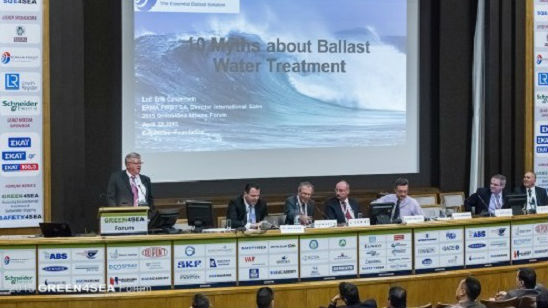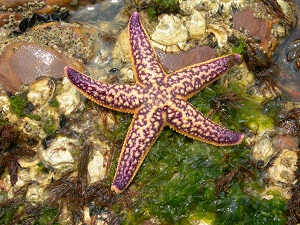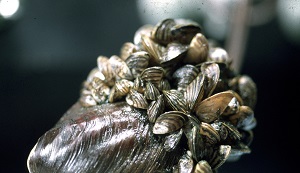[Op-Ed] U.S. Under Fire over Ballast Water Regulations

Perhaps it is the news that India is progressing through legislation supporting the IMO Ballast Water Management Convention that is making everyone nervous. India, like Singapore, Panama and Greece, has enough tonnage to meet entry into force requirements.
Perhaps it is the upcoming MEPC meeting at IMO where other states could signal their intentions that is making everyone nervous.
Whatever it is, we have seen a war of words in the media about the ongoing battle that has plagued the convention for over a decade now.
BIMCO, the International Chamber of Shipping, Intercargo and INTERTANKO got together in a round table discussion and released a statement voicing their deep concern that the convention might enter into force in the near future without a realistic implementation schedule that recognizes the timetable for U.S. type-approved ballast water management systems to be available in sufficient quantities.
With only about 2.5 percent of the world’s gross tonnage required to set the clock ticking for a 2016 entry into force, the organizations say they are voicing their concerns directly to the U.S. EPA.
Telling the U.S. EPA
The groups say that the convention’s entry into force may create an “impossible situation for ships that trade to the United States, where unilateral national regulation is already in force. The U.S. regulations ultimately require all ships that discharge ballast into U.S. waters (12 miles) to treat this through a U.S. Coast Guard (USCG) approved ballast water management system. Currently there are a number of such systems in the USCG testing and approval process, but none that have as yet received type approval.

Shipowners that have not already done so, will be required to spend between $1 million and $5 million to install a ballast water management system on each of their ships in accordance with the schedule established in IMO Assembly Resolution A.1088(28). It is estimated that there are 50,000 ships that require to be fitted with system over a five year period.
“There are 54 ballast water management systems approved under the IMO regime, but worryingly only 17 manufacturers have indicated an intent to submit their system for USCG approval testing,” says the organizations.
“There is no guarantee that systems submitted will gain approval under the stringent U.S. testing regime. Consequentially, when the IMO convention enters into force, ship operators trading to the U.S. will be forced to fit a ballast water management system that may never achieve USCG type approval. If the chosen system does not obtain USCG approval, it will have to be replaced within five years in order to continue to trade to the U.S.
“A shipowner, who in good faith wants to comply with international and national ballast water management requirements, therefore faces an unacceptable position of having to possibly invest twice in a ballast water management system through no fault of his or her own.”
The organizations have strongly urged IMO member states to take this potentially very costly issue into account when deliberating ballast water management issues at the upcoming MEPC meeting this month. “The safest way to avoid it is to ensure that there are sufficient USCG approved ballast water management system available on the market before the IMO convention enters into force.”
Finally, the organizations say that treatment system manufacturers should be encouraged to apply for U.S. approval. “The low rate of application raises serious concerns over confidence in the operational capability of equipment that is already being sold.”
Myths Debunked
Their statements were taken up widely by maritime media outlets, more so than manufacturer ERMA First’s debunking of what it calls myths about ballast water treatment. Speaking at a conference on April 22, Erma First’s International Sales Manager, Leif Erik Caspersen, debunked what he says is the myth that shipowner organizations will force IMO to postpone the ratification of the convention. This is not going to happen, he says, and there is no indication that port authorities will waive their penalties once it enters into force either.
_2.jpg) Caspersen believes there are an adequate number of systems available. “More than 50 makers of ballast water treatment systems have been granted IMO basic approval, between 35 and 40 systems have been granted IMO final approval, over 50 systems have been granted type approval by their administration and more are under development.”
Caspersen believes there are an adequate number of systems available. “More than 50 makers of ballast water treatment systems have been granted IMO basic approval, between 35 and 40 systems have been granted IMO final approval, over 50 systems have been granted type approval by their administration and more are under development.”
He believes that more manufacturers are entering the market, and they are able to handle the increased demand for supplying all vessels.
Some reality checks for both sides
Invasive species specialist Dr Rob Hilliard, principal of Intermarine Consulting, recently pointed to some issues that tend to be glossed over in the debate. “The USCG has the temporary plan in place to accept IMO approved units, and the grandfathering principle has also been accepted by IMO MEPC for existing units whose performance can't attain a new standard,” he says.
“It also looks as if many of the units that were type approved units under the IMO G8 guidelines will achieve the new U.S. target criteria without many modifications, and a few units with almost none, (assuming their manufacturers will submit them to a USCG approved lab to demonstrate this performance under the U.S. higher level testing requirements).”
Hilliard cites a UK P&I Club advisory, and says that if the convention comes into force this time next year ships must comply by fitting a unit by their first International Oil Pollution Prevention renewal survey, which amounts to some 57,000 ships. So the P&I Club, amongst others, believes that the shipping industry will have to spend roughly $57 billion over the ensuing three to four years as well as make arrangements for an average of 40 ships per day to get fitted out with a unit.
Caspersen’s good news for shipowners on this is that “increased demand and regulatory pressure could cause prices to rise.” Also, he says, shipowners often underestimate the complexity of a ballast water treatment system installation. “It’s much more than just buying a system and plugging it in.”
 System delivery time at the moment, says Caspersen, is six to eight months. “As ballast water management convention and USCG deadlines approach, the demand drives up and the time required for delivery is likely to increase.”
System delivery time at the moment, says Caspersen, is six to eight months. “As ballast water management convention and USCG deadlines approach, the demand drives up and the time required for delivery is likely to increase.”
Meanwhile...
Shipowners, therefore, seem to be caught in a situation they are not happy about and are unlikely to be happy about for some years to come, despite their environmental commitment to reducing the risk of invasive species.
This environmental situation, says Caspersen, sees a new invasive species successfully introduced every nine weeks or so.
On the ratification side, as well as India, rumour around the industry says that Indonesia might also be getting close to ratification.
The opinions expressed herein are the author's and not necessarily those of The Maritime Executive.
